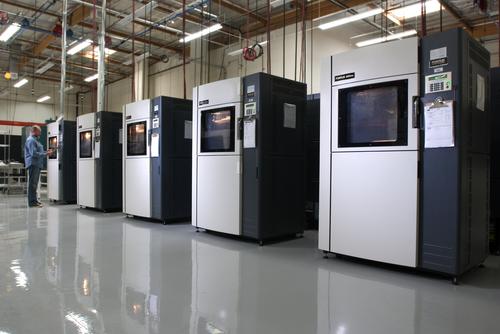September 9, 2015

3D printing, also known as additive manufacturing, has come a long way since its inception nearly 30 years ago. Starting off as a relatively crude process, the technology produced intricate prototypes that were valuable for design validation, but not particularly durable.
Fast forward to 2015 and look at how much has changed. The last three decades have seen the processes and materials improve to where low-volume production of strong end-use parts is now commonplace. To fully leverage these advancements, focusing on a few key elements in both the design and production of your parts will ensure they’re strong and will provide robust solutions to your most demanding project needs.

Materials Matter
No matter how well a part is designed, if it’s made with the wrong material, it won’t get the job done. As such, knowing your part’s application is crucial in selecting the correct process and material. Building parts with the same engineering-grade thermoplastics used in injection molding, such as ABS and polycarbonate (PC), is possible with fused deposition modeling (FDM).
Laser sintering (LS), which produces strong parts out of nylon materials, offers multiple composite nylons, including glass-filled, carbon, and aluminum, for increased strength and heat deflection. Additionally, both the FDM and LS processes have materials fit for extremely challenging applications that can also withstand exposure to high temperatures and chemicals.
Strength is not just limited to plastics. One of the major advancements in additive manufacturing is the ability to create parts out of stainless steel, aluminum, cobalt chrome, and titanium through a process called direct metal laser sintering (DMLS). Ideal for smaller, complex parts, DMLS expands the use of additive manufacturing to applications in which metal is required, including demanding aerospace and medical environments.
Applications-Based Decision-Making

Related articles on DesignNews.com
How each additive process builds a part and that part’s intended purpose are important factors that go hand in hand when deciding which process to use. It’s important to ask yourself the following qualification questions:
1. Application – What is the purpose of the end product? For example, you may need to build a small volume of complex parts that require the strength, dimensional accuracy, and repeatability of FDM, LS, and DMLS parts. Whereas a sacrificial investment casting pattern is for one-time use, needs to burnout clean easiest and is easiest to achieve with stereolithography (SL).
2. Function – What does the part need to do? If it just needs to look and feel like the end-use part, PolyJet can produce true product realism. Or perhaps you need a hard-working part that hinges, snaps, or bears a load, which requires a process that can produce strong tensile strength, like LS.
3. Aesthetics – How does the part need to look and feel? Photopolymer processes such as SL and PolyJet can achieve smooth parts right off of the machine but aren’t the most stable and durable. While thermoplastic processes like LS and FDM can create stronger and more durable parts, they often require finishing processes to achieve a smooth surface finish.
The main thing to remember is there isn’t a “one-size-fits-all” technology in additive manufacturing, and it’s important to get to know the pros and cons of each process.

Design Hacks for Optimizing Strength
A major benefit of additive manufacturing is freedom from the rigid design constraints of traditional manufacturing methods, such as injection molding and machining. Parts designed with fluctuating wall thicknesses, intricate features, holes, and undercuts aren’t a problem for 3D printing, empowering you to design your part around its intended functionality rather than having to design a part for the manufacturing process.
About the Author(s)
You May Also Like





